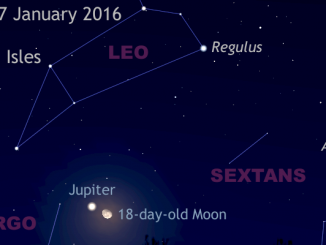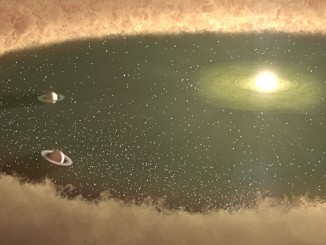13 June update: click here for new Great Red Spot images.
History of observation
While it’s possible that the GRS is the same storm discovered by Italian astronomer Giovanni Cassini in 1665, the first definite observations of the Great Red Spot date back to drawings made by German astronomer Samuel Heinrich Schwabe in 1831. The storm’s striking colour in 1878 led American astronomer Carr W. Pritchett to coin the name we use today, and the feature has been observed continuously since.
What is the GRS?
The Great Red Spot is an anticyclone weather feature that rotates counter-clockwise with a period of about six Earth days. Other Jovian cloud layers intermittently cover it leading to changes in colour, but generally, the GRS cloud tops are colder and extend 8 kilometres above their surroundings. The storm’s longevity is partly because Jupiter has no land masses or solid surface to cause it to lose energy due to friction.
Changing size
In the glory days of the Great Red Spot in the 19th century, the feature was a large oval some 48,000 kilometres (30,000 miles) long, but it was only half that length by the time the Voyager spacecraft visited Jupiter 40 years ago. The storm has become more rounded in recent years, but its decline continues; it’s presently under 16,000 kilometres long.
Why is the GRS red?
The reason for the storm’s signature hue is unknown, but theories suggest that compounds of phosphorus and sulfur or the Sun’s ultraviolet light acting on ammonium hydrosulfide and acetylene in Jupiter’s outer atmosphere could create organic compounds called tholins that would account for the red colour.
What’s now happening to the GRS?
The Great Red Spot lies south of Jupiter’s South Equatorial Belt (SEB), constrained to a latitude close to 22 degrees south of the planet’s equator by easterly jet streams to the north and a westerly jet to the south. Recently, observers have witnessed interactions with Jupiter’s SEB that appear to be peeling material from the GRS on a roughly weekly basis. These filaments, some of which are 10,000 kilometres long or more, form a temporary bridge between the GRS and the SEB.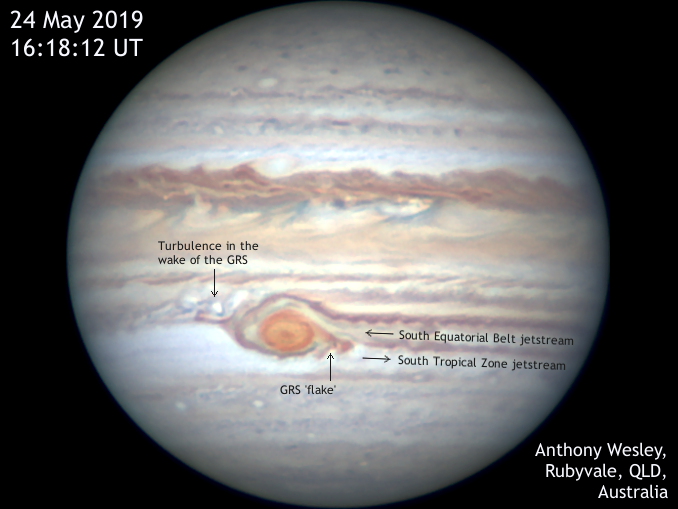
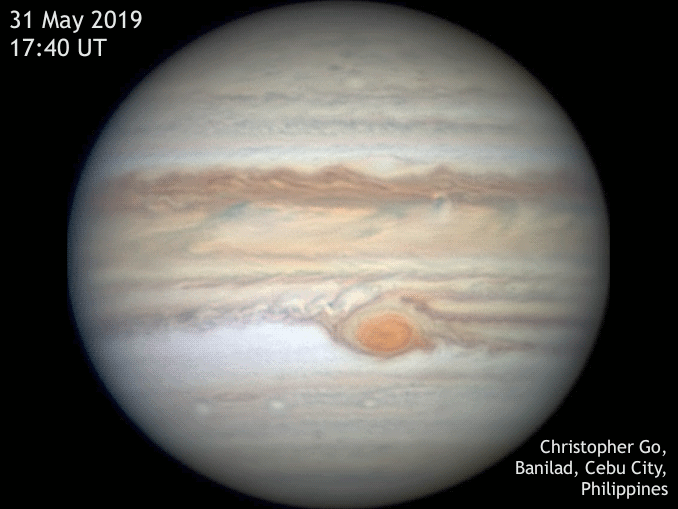
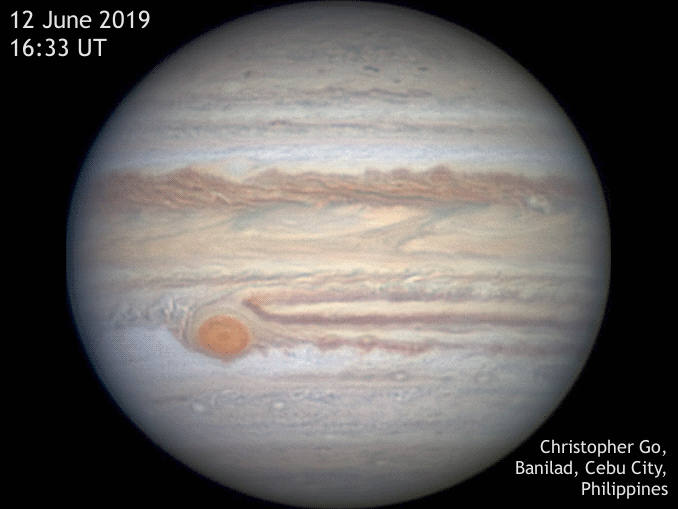
Since Jupiter is a gaseous body, it rotates faster at the equator compared to the poles. At the southerly Jovian latitude of the Great Red Spot, cloud features make one rotation about the planet every 9h 56m, on average. However, the GRS is free to drift in Jovian longitude, so observations are used to refine predictions of when the feature is best placed to see from Earth.
The Great Red Spot is easiest to view (tip: a blue filter in your telescope’s eyepiece helps) when it crosses the imaginary line joining Jupiter’s north and south poles. At such times we say that the GRS is ‘in transit’, though the storm is observable for up to an hour or so either side of the transit time. 
GRS predictions for other dates, times and global locations are also available through our interactive online Almanac. To see the Jupiter events for any given day, ensure that the ‘Add phenomena of Jupiter?’ checkbox is ticked. All Galilean moon phenomena and Great Red Spot predictions are in Universal Time (UT). For help using the Almanac, see this article.
For general information on observing Jupiter and its Galilean moons for the 2019 opposition, see this article.


